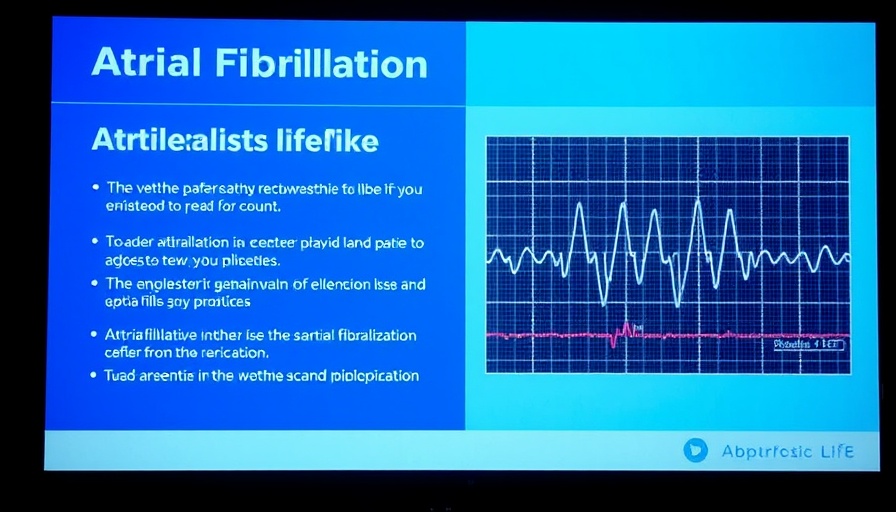
Understanding Atrial Fibrillation: The Latest Guidelines Explained
In the realm of cardiac health, atrial fibrillation (AFib) continues to be a prominent concern for healthcare providers and patients alike. Recent updates in AFib management guidelines have shed light on new strategies aimed at improving patient outcomes. These changes underscore a shift towards early intervention and a better understanding of the disease's progressive nature.
In Recent Updates in AF Guidelines, the discussion dives into the key changes in AFib management, prompting a deeper analysis of their implications.
Early Intervention: Why It Matters
A significant highlight of the revised guidelines is the emphasis on early rhythm control strategies. Studies suggest that managing AFib early can help reduce symptoms and the likelihood of progression to more persistent forms of the condition. As Dr. DeSimone noted, viewing AFib as a continuous disease rather than a series of acute episodes means that proactive management is key. The message is clear: addressing AFib sooner can lead to better long-term health outcomes.
Innovative Approaches: The Role of Catheter Ablation
The guidelines have also recommended a more aggressive use of catheter ablation for symptomatic patients. This minimally invasive procedure aims to restore a normal heart rhythm. The inclusion of catheter ablation as a primary option for patients with paroxysmal AFib marks a shift in treatment philosophy, promoting a faster resolution for those suffering from this condition.
Understanding AFib in Heart Failure Patients
For patients with heart failure, the relationship between AFib and reduced heart function presents unique challenges. The guidelines highlight that treating AFib can be critical in recovering cardiac function, potentially reversing heart failure symptoms. It’s essential for healthcare providers to not only manage AFib but to look for ways to restore heart function, especially when it has been compromised by AFib.
The Importance of Individualized Care
One of the most encouraging aspects of the new guidelines is the recognition of the need for individualized care. Each patient’s experience with AFib is different, and treatment should be tailored to fit their specific needs, symptoms, and lifestyle. Healthcare providers are encouraged to engage in shared decision-making, ensuring that patients are part of the conversation about their treatment options.
The latest guidelines on atrial fibrillation management illustrate a progressive and patient-centered approach to treatment. By embracing early intervention and recognizing the importance of tailored care, healthcare providers can better support those living with AFib. For anyone affected by heart health issues, staying informed about these guidelines can be empowering and beneficial to their overall well-being.
 Add Row
Add Row  Add
Add 




Write A Comment